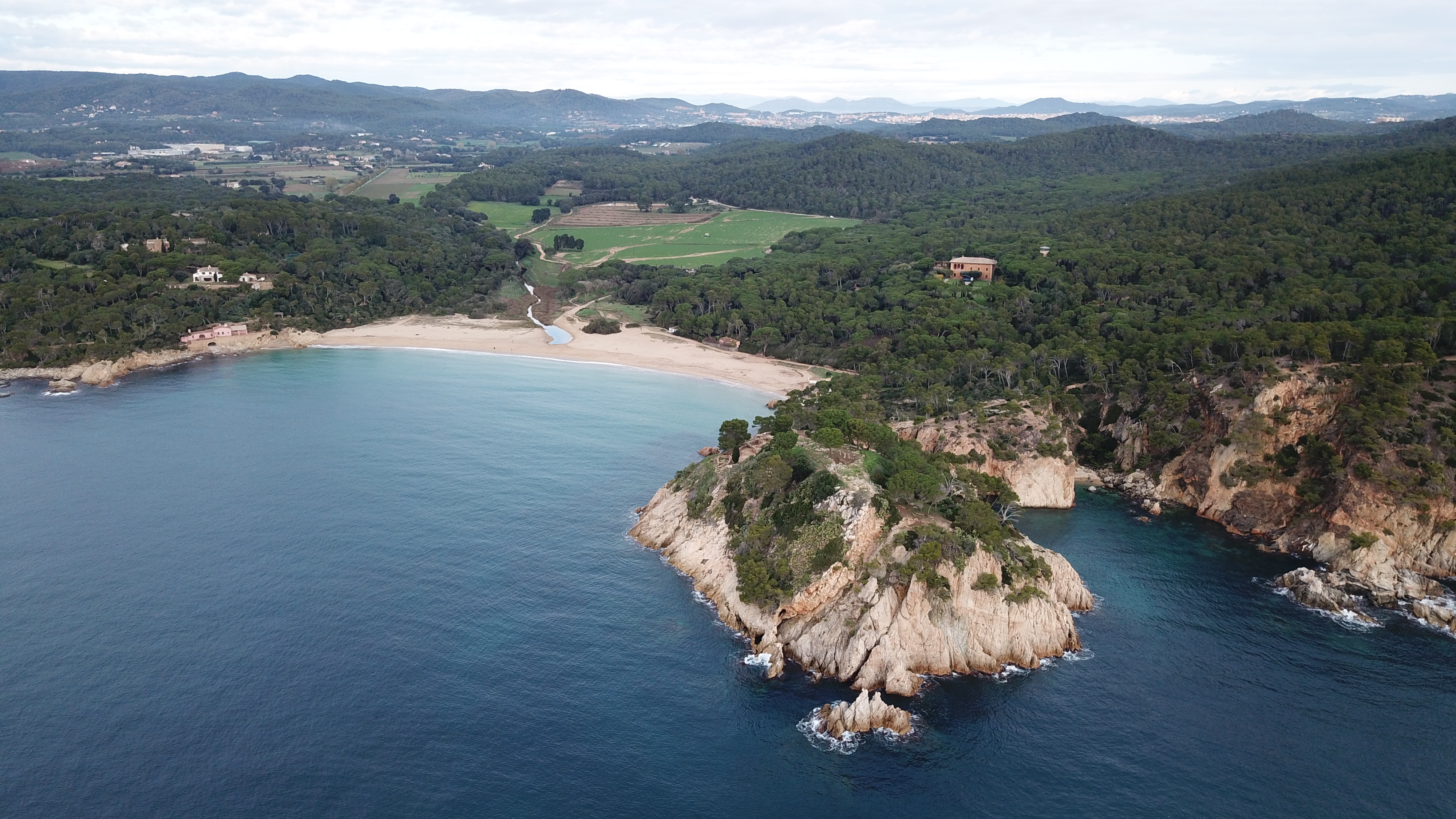Castell–Cap Roig natural space
-

Castell–Cap Roig is an area of high environmental, cultural and scenic interest. It has a total area of 1,105.63 hectares, 427.95 of which correspond to the land environment and 677.68 to the marine environment. The space is located in the municipalities of Palamós, Palafrugell and Mont-Ras.
This space contains all of the essence of the Costa Brava with a very interesting mosaic of agroforestry spaces in contact with the sea, a small marsh behind Platja de Castell, small coves and steep cliffs. The extensive agricultural plain reaching almost as far as the sea makes this space stand out as one of the last well preserved spaces on Girona’s coastline.
The space houses a significant number of protected species of fauna and flora, both on land and at sea. The birds stand out in particular, with distinctive examples such as the European shag, of which there is a major year-round population, grey petrels, birds of prey and a large number of species of passerine birds. Out to sea, cetaceans are often seen, in particular striped and bottle nose dolphins. Under the water, there are major extensions of Neptune grass, very interesting seaweed communities, and in the area around the Formigues islands, a coral community with high biodiversity.At Castell–Cap Roig there are important elements of historical interest, such as the Iberian settlement to the east of Platja de Castell, the fishermen’s huts at Castell, Cala Estreta and El Crit, and the castle and botanical garden of Cap Roig at the northern end of the space.
The area around Castell includes the Mas Juny house, which has been declared a cultural asset of national interest (BCIN) and was the property of the painter Josep Maria Sert during the 1930s. The presence of this internationally renowned artist attracted stars such as Marlene Dietrich, Coco Chanel, Visconti and the young Salvador Dalí to the Costa Brava. Castell is one of the reference points of the glamorous Costa Brava and of the beginnings of tourism.
The painter Sert is also present on the beach through the ensemble of buildings known as the Barraques d’en Sert, which are very picturesque. Mas Juny was subsequently acquired by Alberto Puig Palau, a patron of the arts immortalised by Joan Manuel Serrat in the song Tio Alberto. Puig Palau kept alive the area’s international renown, with the result that the mythic filming of Pandora and the Flying Dutchman in 1951 starring Ava Gardner took place on the Costa Brava. He also built the famous Barraca d’en Dalí, on the farm’s lands, where the famous painter sometimes stayed, among others.
Castell is also one of the emblems of the struggle to conserve the country’s natural spaces. The land of this location and of the Plana de Castell have partly belonged to the Generalitat, Catalonia’s regional government, since 2000 after a very intense popular campaign led Palamós council to hold a referendum in 1994 where a large majority of citizens were in favour of protecting it, thus preventing development on it.
The space has a parking area in the Castell zone and services on the beach during the summer months. During this period motorised access to the space is restricted and it is only accessible on foot.
The space has an extensive network of trails and bike paths to explore it on, the most notable of which are the camí de ronda coastal path that links Palamós to Palafrugell passing the main coves in the natural space, the Little Train greenway inland, especially designed to be done by bike, and the GR 92 long distance path, which passes through the inland area from north to south.
COMPARTEIX A LES XARXES SOCIALS:


 Escoltar
Escoltar 